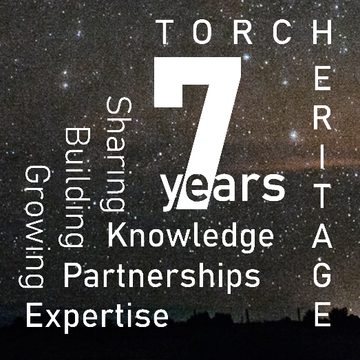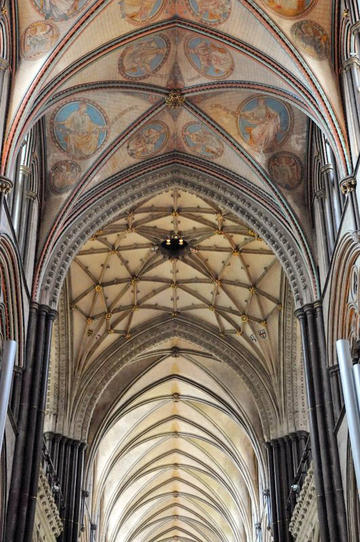Remote Research on Historic Buildings
A Summer Internship with the Oxford University Safety Office
The TORCH Heritage Partnerships Team and the Oxford University Heritage Network, working closely with the University of Oxford Careers Service, set up and funded this summer internship with Safety Office of the University of Oxford.
At the start of July, I excitedly accepted the offer of a summer internship with the Oxford University Safety Office, under the supervision of the University Fire Officer, Steve Emery. The internship took place over a fortnight, during which I investigated the types of limestone used in English cathedrals and how they could be furnace and compression tested to inform fire-fighting and post-fire restoration techniques.
My supervisor was really encouraging and helpful, providing articles and links to resources which provided a starting point for my research. During the first few days I looked into methods for determining the compressive strength of rock samples, including saturated and heat-exposed samples and the procedures for achieving these rock conditions. I then compiled data from the British Geological Survey and Historic England’s Strategic Stone Study about the specific types of building stone used in English cathedrals. I found that twenty cathedrals were predominantly constructed of limestone. However, the data I had collated did not consistently provide context about where in the cathedral each type of stone was used. Knowing whether a specific limestone had been used for ornamentation, flooring, walls, or all three, would be vital for effectively applying the test results to inform fire safety plans in cathedrals. Therefore using creative internet searches, online Bodleian library resources, Google Scholar, the Stone in Archaeology database, and extensive use of Chrome’s ‘find’ function, I conducted further research with a particular focus on identifying the building stones used in vaulted ceilings, as these separate the high fire loads of the roof from the bodies of the cathedral. This culminated with my proposal, along with justification and explanation, for which stones it would be most appropriate to test using the scoping exercise I had outlined.
It was not difficult to be motivated about this internship given my fascination with the way geological and human history coincide in cathedrals, and the knowledge that my research could help to save important heritage buildings and human lives from fire. I appreciated my supervisor always being up for discussing the project over email and video calls, but I was also grateful for the flexibility of working hours while working remotely. It was great to wake up knowing I had a set number of hours I needed to spend working that day, but that I had the freedom to distribute those hours in the way which suited me best. When the weather was nice or I had completed a large chunk of work in the morning, I was able to go for a run, dog walk or bike ride before returning to work later on, feeling refreshed. Alternatively, I could plan my breaks to coincide with those of my family members who were also working remotely from home, particularly if I’d discovered something fascinating or wanted to talk through some ideas. This was a great opportunity to focus on sleuthing through intriguing subject matter and apply my knowledge, energy, and enthusiasm to a meaningful project. It was a welcome change from the monotony of lockdown life!
I really enjoyed this internship, despite the unprecedented pandemic situation in which it took place. Although it was a challenge at times to find the desired information, the project was always interesting and thought-provoking, and the experience I have gained of online research and report-writing will prove beneficial during the next year of my degree. This internship has opened my eyes to career opportunities I hadn’t previously considered, having disproved my theory that I would hate to work behind a computer all day: it turns out I can actually enjoy it if concentrating on fascinating topics! I appreciated being given the freedom and time to learn about so many amazing places and look forward to visiting the cathedrals in the future to see the structures and building stones in person. I also enjoyed the way discussions with my supervisor prompted the internship to evolve as we considered how the testing could prove most useful. This adaptability enabled me to branch out beyond the original brief and expand my research to touch upon iconic Oxford buildings that I am familiar with from my studies, cathedrals constructed predominantly of sandstone, and the structural engineering aspects of the investigating fire risk to cathedrals. This internship has fuelled my interest in pursuing a career the heritage sector, having discovered it can provide unique and rewarding opportunities to harness my love of geology and historic environments in order to help protect people and places.
Clare Ballantyne is studying for an integrated Masters degree in Earth Sciences at the University of Oxford. She is interested in climate, natural hazards, and geology, particularly that of the British Isles. She is also fascinated by more recent history and has a love of historic buildings, and is interested in pursuing a career in the heritage sector upon completing her degree.
TORCH Heritage Programme Homepage


The decorated vaulted ceiling in Salisbury Cathedral. Photo of the vaulting below the crossing and the tower and spire. The vaulting of the nave is in the background. © Philip Halling (CC-BY-SA/2.0)


